
PUMPA - SMART LEARNING
எங்கள் ஆசிரியர்களுடன் 1-ஆன்-1 ஆலோசனை நேரத்தைப் பெறுங்கள். டாப்பர் ஆவதற்கு நாங்கள் பயிற்சி அளிப்போம்
Book Free DemoWater has become a scarce commodity due to the growing population. Human activities like bathing, washing clothes, and utensils make the water dirty.
However, other major factors like agricultural activities, effluents from industries, and sewage from residential buildings contaminate the water bodies. Harmful substances like sewage water, toxic chemicals, and silt, known as water pollutants, get mixed with water, polluting it, causing water pollution.
Ganga - Case Study
Ganga - Case Study
Ganga is one of India's holiest rivers, which passes through parts of the North, Central and Eastern regions of India. States like Uttar Pradesh, Bihar, and West Bengal are greatly benefitted from this river and its tributaries. According to WWF (World Wildlife Fund), Ganga is one of the endangered rivers in the world mainly because of the rising water pollution. As a matter of fact, in many places, the river is dead and aquatic life cannot survive in that environment.
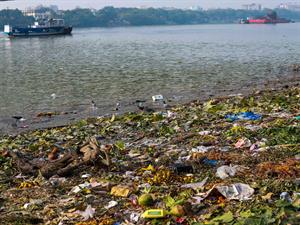
Pollution on the bank of river Ganga
In \(1985\), the Ganga Action Plan, an ambitious project to save the river, was launched. Its goal was to lower the river's pollution levels. However, population growth and industrial development have already irreversibly damaged this majestic river. In \(2016\), the Indian government launched a new initiative called the National Mission for Clean Ganga (NMCG).
In order to understand the plight of water pollution in the river Ganga, let us consider the example of Kanpur, which is one of India's most populous towns through which the river flows. The amount of water in Kanpur is relatively less, and the river's flow is extremely slow. Kanpur also has over \(5000\) industries. These industries include fertilizer, detergent, leather, and paint. Toxic chemical waste is discharged into the river by these industrial units.
In \(1985\), the Ganga Action Plan, an ambitious project to save the river, was launched. Its goal was to lower the river's pollution levels. However, population growth and industrial development have already irreversibly damaged this majestic river. In \(2016\), the Indian government launched a new initiative called the National Mission for Clean Ganga (NMCG).
In order to understand the plight of water pollution in the river Ganga, let us consider the example of Kanpur, which is one of India's most populous towns through which the river flows. The amount of water in Kanpur is relatively less, and the river's flow is extremely slow. Kanpur also has over \(5000\) industries. These industries include fertilizer, detergent, leather, and paint. Toxic chemical waste is discharged into the river by these industrial units.

Boys playing in the polluted river Ganga
Courtesy: Papai
Causes and Effects of Water Pollution
1. Effluents from industries such as chemicals, sugar, and textiles emit hazardous chemicals such as arsenic, lead, and fluoride that trigger toxicity in plants and animals.
2. Pesticides used in cultivation can trigger water contamination and may also cause soil pollution. Algal development of water sources is a prime illustration of contaminants ruining aquatic organisms since algae growth deprives the water source of oxygen that is essential to the sustainability of aquatic life.
3. Human behaviours such as bathing, cleaning, and defecating in open spaces can pollute the bodies of water. Harmful microbes, viruses, or parasites enter the water sources and can cause diseases such as cholera, jaundice, and typhoid.
Potable Water
Water which is suitable for drinking purpose is called potable water. Safe drinking water keeps us healthy and helps us in combating harmful diseases like cholera and typhoid in our country.
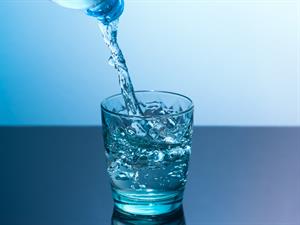
Potable Water
How to make drinking water safe for human consumption?
Let us look at a few ways in which we can get safe drinking water:
1. Most households use candle-type filters or boil water to remove any germs or impurities.
2. Chlorination is widely used for purifying water. In order to disinfect the water, we can add chlorine tablets or bleaching powder. Chlorine must be used cautiously as per the prescribed quantity, or it may have adverse effects on health.
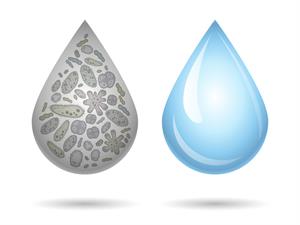
Water Particles: Dirty Water Vs Pure Water
3. Industry standards guarantee that contaminated water is not discharged immediately into rivers and reservoirs. Water treatment plants should be built in all manufacturing zones. Our motto (mantra) should be "Reduce, reuse, and recycle."
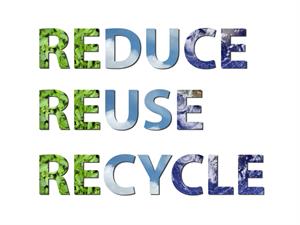
Motto to conserve water
4. We should make a regular effort to conserve power, and we can also follow innovative ideas like reusing water used for domestic chores. Wastewater from washing utensils can be used to water the garden plants.
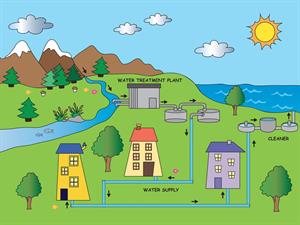
Water Treatment